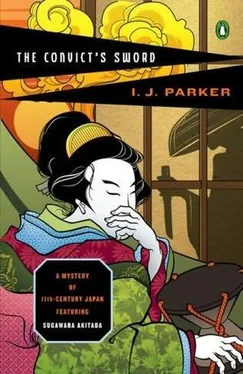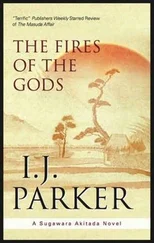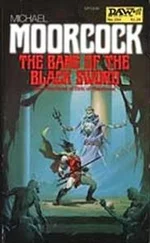I Parker - The Convict's sword
Здесь есть возможность читать онлайн «I Parker - The Convict's sword» весь текст электронной книги совершенно бесплатно (целиком полную версию без сокращений). В некоторых случаях можно слушать аудио, скачать через торрент в формате fb2 и присутствует краткое содержание. Жанр: Исторический детектив, на английском языке. Описание произведения, (предисловие) а так же отзывы посетителей доступны на портале библиотеки ЛибКат.
- Название:The Convict's sword
- Автор:
- Жанр:
- Год:неизвестен
- ISBN:нет данных
- Рейтинг книги:4 / 5. Голосов: 1
-
Избранное:Добавить в избранное
- Отзывы:
-
Ваша оценка:
- 80
- 1
- 2
- 3
- 4
- 5
The Convict's sword: краткое содержание, описание и аннотация
Предлагаем к чтению аннотацию, описание, краткое содержание или предисловие (зависит от того, что написал сам автор книги «The Convict's sword»). Если вы не нашли необходимую информацию о книге — напишите в комментариях, мы постараемся отыскать её.
The Convict's sword — читать онлайн бесплатно полную книгу (весь текст) целиком
Ниже представлен текст книги, разбитый по страницам. Система сохранения места последней прочитанной страницы, позволяет с удобством читать онлайн бесплатно книгу «The Convict's sword», без необходимости каждый раз заново искать на чём Вы остановились. Поставьте закладку, и сможете в любой момент перейти на страницу, на которой закончили чтение.
Интервал:
Закладка:
The Greater Palace Enclosure was protected by several armed divisions of the military guard, but crime was rampant in the capital. In 816 AD the government placed law enforcement for the capital (and eventually the provinces) into the hands of the kebiishicho, the police department. The police, a semi-military force, wore red coats and carried bows and arrows. They kept order, investigated crimes, arrested criminals, brought them to trial before judges, and enforced punishment. In addition, each ward of the capital was also supervised by a warden who reported to the police. The most serious crimes, as defined by the Taiho Code (701 AD), were in order of severity: rebellion against the emperor; damage to the Imperial Palace or royal tombs; treason; murder of one’s kin; murder of one’s wife or of more than three members of a family; theft or damage of imperial or religious property; unfilial acts toward parents or senior relatives; and murder of a superior or teacher. As in China, confessions were necessary for conviction, but flogging was common during interrogation. Buddhist prohibitions against the taking of life meant that the punishment was flogging, prison, or for severe crimes, exile to remote and unhealthy areas of the country. There, forced labor, exposure, or lack of food often resulted in the deaths of the condemned, though exile could be lifted. There were two prisons in the capital, but imperial pardons were common and sweeping. As a result, crime and criminals were numerous and widespread by the mid-eleventh century.
One of the many disasters that visited Heian-kyo and most of the country repeatedly was smallpox. This disease was introduced into the islands of Japan through merchant trading with China and Korea and ravaged the population, particularly in densely populated areas. It was early recognized as infectious, but people tended to seek supernatural intervention, or to accept the danger fatalistically. In 737 AD, the Great Secretary of the Right issued a detailed order about the treatment of smallpox. This involved wrapping the victim, keeping him warm, and withholding water completely. Warm rice gruel, seaweed, and salt were prescribed, even when “mouth and tongue fester.” There is no evidence that medical knowledge had progressed much by the eleventh century, but by then the disease was becoming endemic; that is, people developed resistance and only the young and those who had never been exposed contracted it. In 1020 AD, the young emperor, who was twelve at the time, fell ill but recovered. Those who survived the fever and festering sores were permanently disfigured and often blinded.
There is little contemporary information about the common people, but the lives of the nobles are well documented in diaries, novels, and biographies. Men led public lives, usually in the service of the emperor; they engaged in sports, hunting, and literary pursuits, or entertained their male friends at lavish parties. Women lived secluded in their own quarters of the mansion, where they supervised the household and their children, and spent time reading romances, painting, or making music. Customarily, a nobleman had more than one wife and might additionally keep concubines. Women were slightly better off in the Heian Age than they were in later periods, for they could own property and were protected by the continued influence of their own families. Marriages were arranged between the groom and the bride’s family, and matters such as her status in the husband’s household and her control over her private money were negotiated beforehand. Often a young couple resided with the wife’s parents. But a husband could divorce his wife simply by informing her of this decision. He was also free to take other wives. Women rarely left the home, except for family emergencies, service at court, or pilgrimages to temples or shrines. Women of the lower classes, while often poor and forced to labor alongside the men, enjoyed greater freedom of movement and rarely had to compete with other wives.
The Japanese practiced both Shinto and Buddhism, with Buddhism somewhat more popular among the nobility and Shinto the ancient native faith of the imperial family and the peasants. The two religions coexisted peaceably, sometimes even in the same temple or shrine complex and during the same festival. Shinto involves the veneration of kami, representations of ancestral spirits and of nature, and the practice of ritual purification. It is responsible for many taboos, among them those involving death. Buddhism came to Japan from China via Korea and teaches concepts of personal salvation. Funerals were handled by the Buddhist clergy and normally involved cremation. The cemetery and cremation ground for the capital lay outside the city, and funerals were generally conducted after dark, but in times of catastrophe corpses might be abandoned in the streets and on the banks of the Kamo River. It was believed that the soul of the deceased remained near its home for forty-nine days after death.
For readers familiar with Samurai literature, it should be pointed out that daily customs of the Heian Age differ in some respects from those of later periods. Tea was known, but expensive, and consumed primarily for medicinal purposes. Rice wine was the preferred drink. Foods were simple, consisting of rice, other grains, beans, vegetables, fish and-as hunting was not yet forbidden-fowl and venison. Men did not shave their heads unless they were monks, and women of the upper classes let their hair grow very long and wore many-layered gowns of colored silks or brocade. Although there are references to cotton clothing, cotton was not known at the time, and the material used instead was hemp.
In the eleventh century, the martial arts were more at home among the provincial nobility, who maintained small armies to defend their lands; however, the court nobles also practiced with swords and bows and arrows. Swordsmiths performed a specially honored craft, working both in government service and independently. It was during the Heian period that sword construction first reached the level of perfection for which Japanese swords are admired. Swords were thought to be imbued with a divine spirit and Shinto rituals accompanied the work of the smith.
I have generally followed R.A.B. Ponsonby-Fane’s description of Heian-kyo (Kyoto: The Old Capital of Japan, 794-1869). It is old, but still the most complete account available. In the absence of proof to the contrary and because of the habit and ease of rapid reconstruction after disasters, the general plan of the city and most of the important buildings described by Ponsonby-Fane are assumed to have existed in the early eleventh century. The information about smallpox is taken from Population, Disease, and Land in Early Japan, 645-900 by Wayne Farris.
Интервал:
Закладка:
Похожие книги на «The Convict's sword»
Представляем Вашему вниманию похожие книги на «The Convict's sword» списком для выбора. Мы отобрали схожую по названию и смыслу литературу в надежде предоставить читателям больше вариантов отыскать новые, интересные, ещё непрочитанные произведения.
Обсуждение, отзывы о книге «The Convict's sword» и просто собственные мнения читателей. Оставьте ваши комментарии, напишите, что Вы думаете о произведении, его смысле или главных героях. Укажите что конкретно понравилось, а что нет, и почему Вы так считаете.












